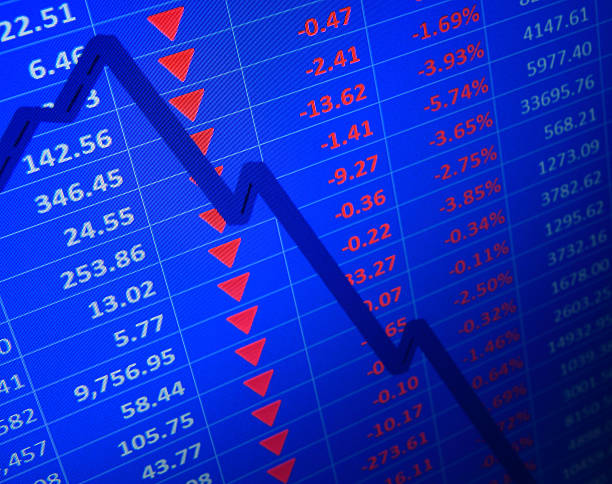The 1929 stock market crash, which precipitated the Great Depression, remains one of the most significant events in the history of global finance. To understand why the 1929 crash occurred, it’s crucial to look at the contributing factors, including speculative investing, economic imbalances, and the failure of governmental regulation. The crash wasn’t an isolated event but rather the culmination of multiple elements that, when combined, led to one of the darkest periods in financial history.
1. The Roaring Twenties: A Period of Excessive Optimism
The 1920s, often referred to as the “Roaring Twenties,” were marked by economic growth, technological advancements, and cultural change. The U.S. economy boomed, driven by industrial production, a surge in consumer spending, and technological innovations such as the automobile and radio. The stock market, in particular, experienced rapid expansion. This period of prosperity created a sense of optimism, which would ultimately lead to speculative behavior.
During this time, investing in the stock market became popular, not just among the wealthy, but also the middle class. Stock prices rose significantly, and many believed that the market would continue to grow indefinitely. However, this exuberance masked underlying economic weaknesses and unrealistic expectations about the stability of the stock market.
2. Speculation and Margin Trading
A key factor that contributed to the 1929 stock market crash was the widespread use of speculative investments. Investors, both large and small, started buying stocks based on the belief that prices would continue to rise. This led to what is known as “speculative mania,” where the price of stocks detached from their underlying value and were instead driven by the expectation of selling to someone else at a higher price.
One of the primary drivers of this speculation was margin trading. This practice allowed investors to borrow money to buy stocks, using their existing investments as collateral. In essence, investors were able to buy more stock than they could afford by taking out loans from brokers. At its peak, the value of stocks purchased on margin was estimated to be about $8.5 billion—an enormous sum at the time.
While margin trading amplified the potential for profits, it also created substantial risks. Investors were betting that stock prices would continue to rise, allowing them to repay their loans and pocket the difference. However, when the market began to decline in late 1929, margin calls forced investors to sell their stocks to cover their debts, exacerbating the decline in prices.
Also Read: Stock Market Closed: Trends for Better Investment Decisions
3. Overproduction and Under consumption
Another key reason behind the crash was the imbalance between production and consumption. In the 1920s, American factories were producing more goods than could be consumed, both domestically and abroad. While businesses expanded their operations, workers’ wages remained relatively stagnant, limiting their ability to purchase the goods that were being produced.
Additionally, international trade was affected by protectionist policies such as the Fordney-McCumber Tariff of 1922, which raised import duties on foreign goods. These policies led to retaliatory tariffs from other countries, which further hindered global trade and worsened the overproduction problem. As a result, the market for American goods shrank, leading to inventory build up and a slowdown in manufacturing. Many businesses were unable to sell their goods, which led to falling profits and stock prices.
4. Weaknesses in the Banking System
The banking system of the 1920s also played a role in the crash. Banks were not as regulated as they are today, and many took risks by lending money to stock market investors. When the stock market began to falter, these loans went unpaid, causing banks to fail. By the time the crash hit, many financial institutions were already struggling due to bad loans and risky investments.
Moreover, the Federal Reserve, the central banking authority, failed to act decisively to curb the speculative boom or stabilize the economy. In fact, during the early months of the crash, the Federal Reserve raised interest rates to stem inflation, which only exacerbated the financial panic. The tightening of credit led to further liquidity issues and an acceleration of the collapse in the stock market.
5. The Initial Market Decline
The crash began on October 24, 1929, known as “Black Thursday.” On that day, stock prices began to plummet, and panic selling ensued. Many investors rushed to sell their stocks, fearing further losses, which only drove prices lower. However, the situation worsened on October 29, 1929, known as “Black Tuesday.” The Dow Jones Industrial Average lost nearly 12% of its value, and billions of dollars in wealth were wiped out.
6. The Aftermath: The Great Depression
While the crash itself was devastating, it was the ripple effect that caused the long-lasting impact. The loss of wealth led to reduced consumer spending and a steep decline in industrial production. As businesses closed, banks failed, and unemployment soared, the United States entered the Great Depression, a period of economic hardship that lasted throughout the 1930s.
The crash exposed the flaws in the financial system and led to significant changes in how the economy was regulated. In the aftermath, reforms such as the Securities Exchange Act of 1934 were introduced to provide oversight to the stock market and prevent excessive speculation. The Federal Reserve also gained more power to manage the economy and regulate banking practices.
Conclusion: Why Did the 1929 Stock Market Crash?
In conclusion, the 1929 stock market crash was a result of several interconnected factors. Speculative investing, excessive use of margin trading, economic imbalances like overproduction, and weaknesses in the banking system all contributed to the collapse. The belief that the stock market could only go up, combined with a lack of government regulation and oversight, set the stage for disaster.

